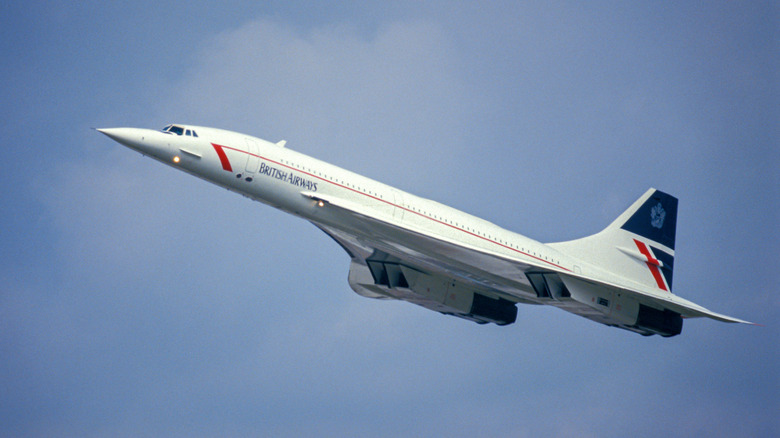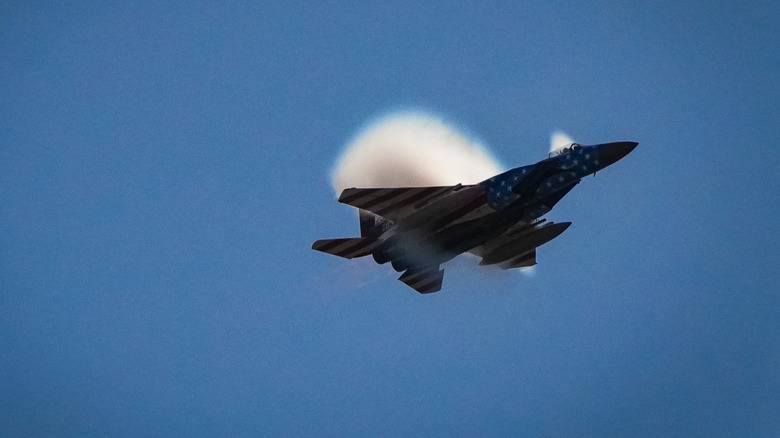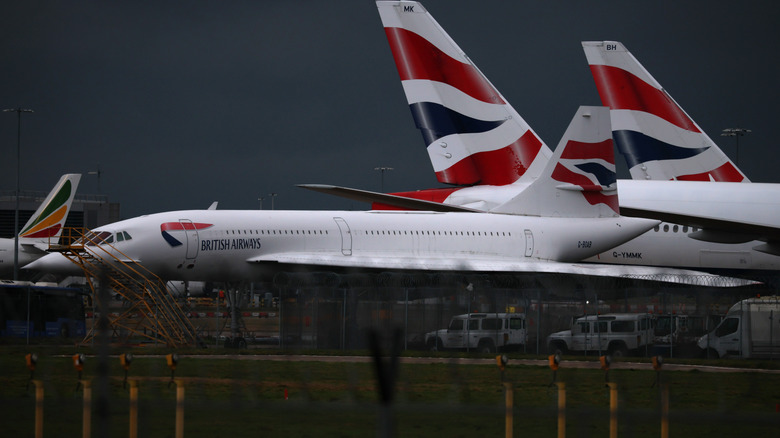Why Were Supersonic Concorde Flights Never Conducted Over Land?
The intrepid human spirit has constantly pushed the boundaries of how fast we can go. From 100-yard dashes and marathons to the land speed records set on various vehicles, the pursuit of speed has been a compelling but dangerous subplot in the human story. The U.S. Navy and Air Force teamed up with the National Aeronautics and Space Administration (NASA) to build the fastest aircraft ever; the X-15A rocket plane. Three were built between 1959 and 1968, and the second one flew at Mach 6.7 (4,520 mph) in October of 1967. While there are no set speed limits for passenger airliners , most large commercial planes fly slower than the speed of sound.
The Concorde was developed jointly by France and the British Aircraft Corporation and was capable of speeds of up to 1,354 miles per hour (2.04 times the speed of sound, or Mach 2.04). The Concorde was in operation for close to three decades and flew commercially into the 20th century. But the aircraft was a nuisance for people on the ground due to its loud sonic boom, which eventually became one of the reasons the Concorde was discontinued. To protect people on the ground from the noise and shock waves the Concorde produced, countries around the globe banned commercial supersonic flights over land or populated areas. That made its most commercially viable run a transatlantic hop between New York and either London or Paris. In comparison, a chainsaw produces around 120 adjusted decibels (DBA) of noise while a sonic boom can be as loud as 110 DBA. We'll rely on some basic physics to explain how supersonic planes make a loud bang when breaking the sound barrier.
A sonic boom is created by shock waves
The loud noise made by the Concorde was just part of the problem; shockwaves associated with sonic booms were strong enough to shatter glass and crack plaster in buildings on the ground. More than 300 windows broke every month in Arizona while the U.S. conducted supersonic test flights during the 50s and 60s, leading to thousands of legal claims by homeowners. Sound from a stationary object travels in concentric pressure waves that move away from the object, forming an invisible sphere. However, the uniformity of the sound waves is disturbed when a the sound-generating object is in motion. The Doppler effect makes a vehicle's engine sound higher pitched while approaching and lower-pitched while leaving. These dynamics increase drastically when an object producing the sound is traveling faster than sound itself. Sound waves form an invisible Mach cone behind supersonic airplanes, and two loud booms are heard by people on the ground when the cone of disturbed air reaches them. Because the Mach cone forms behind an airplane that is flying faster than sound can travel, people on board don't hear the boom.
Depending on the environmental conditions, the shock waves that produce sonic booms can sometimes be seen in the form of spherical white clouds behind the plane or around protruding features. In addition to the thunderous sonic booms it produced, the Concorde was loud in slower-speed operations. It used turbojet engines instead of conventional turbofan engines, as they provided the necessary thrust to go supersonic. However, turbojet engines were much louder than their contemporaries, especially when the aircraft was pushed hard during take-off and landing.
Several countries restricted supersonic flights over land
The Concorde also used delta wings, which were needed to stabilize the plane during high-speed operations but provided barely adequate lift at slower speeds. Because of this, the Concorde took off at about 225 miles per hour compared to 150-180 mph for typical jet airliners from Boeing and Airbus.
The U.S. banned supersonic flight over land in 1973 owing to noise and property damage complaints from residents. Lawyer Richard Wiggs started the Anti-Concorde Project in England in 1965, which successfully lobbied for restrictions on overland supersonic flights. Canada banned supersonic flight over areas with more than 1,000 people in a 100 square mile area, and Malaysia complained to Singapore Airlines about the noise from Singapore to London Concorde flights. The Singaporean government later worked out a deal to re-route flights over Indonesia, but this added time to the trip and increased fuel consumption. Saudi Arabia rescinded permission for the Concorde to fly over that country's deserts after the thunderous sonic booms began to interfere with camel breeding patterns.
the Concorde was free to fly over unpopulated areas like the open ocean, so its most practical use was for transatlantic trips from London or Paris to New York. The Concorde typically made this trip in about 3.5 hours, less than half the time it takes a typical modern airliner. This proved that the Concorde was way ahead of its time, but high fuel costs and concerns about noise and shock wave damage made it hard to keep the Concorde airborne. The final nail in the coffin was the 2000 crash of Air France Flight 4590 that killed 113 people. Although this was the aircraft's only fatal accident, the Concorde project was shut down and flew its last passengers on October 24th, 2003.


